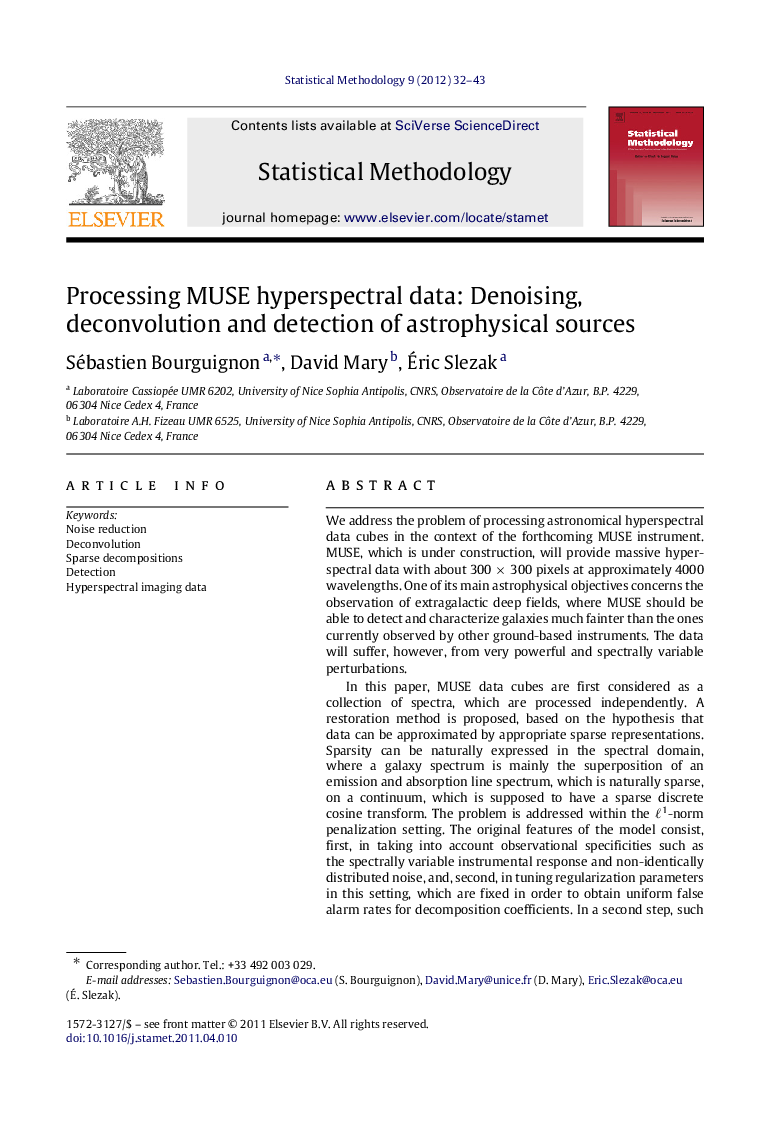| کد مقاله | کد نشریه | سال انتشار | مقاله انگلیسی | نسخه تمام متن |
|---|---|---|---|---|
| 1151182 | 1489830 | 2012 | 12 صفحه PDF | دانلود رایگان |

We address the problem of processing astronomical hyperspectral data cubes in the context of the forthcoming MUSE instrument. MUSE, which is under construction, will provide massive hyperspectral data with about 300×300300×300 pixels at approximately 4000 wavelengths. One of its main astrophysical objectives concerns the observation of extragalactic deep fields, where MUSE should be able to detect and characterize galaxies much fainter than the ones currently observed by other ground-based instruments. The data will suffer, however, from very powerful and spectrally variable perturbations.In this paper, MUSE data cubes are first considered as a collection of spectra, which are processed independently. A restoration method is proposed, based on the hypothesis that data can be approximated by appropriate sparse representations. Sparsity can be naturally expressed in the spectral domain, where a galaxy spectrum is mainly the superposition of an emission and absorption line spectrum, which is naturally sparse, on a continuum, which is supposed to have a sparse discrete cosine transform. The problem is addressed within the ℓ1ℓ1-norm penalization setting. The original features of the model consist, first, in taking into account observational specificities such as the spectrally variable instrumental response and non-identically distributed noise, and, second, in tuning regularization parameters in this setting, which are fixed in order to obtain uniform false alarm rates for decomposition coefficients. In a second step, such sparse decompositions are used as an input to an object detection and characterization method. The decomposed spectra are first used for spatial segmentation. Then, once a group of pixels has been identified as belonging to the same object, the corresponding spectrum and amplitude map are jointly estimated under the former sparsity assumption. Applications to object identification, the amplitude map and spectrum estimation are presented for realistic deep field simulated data cubes provided by the MUSE consortium.
Journal: Statistical Methodology - Volume 9, Issues 1–2, January–March 2012, Pages 32–43